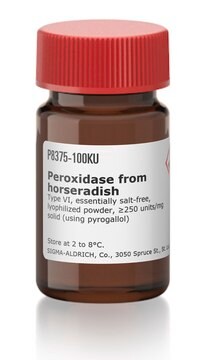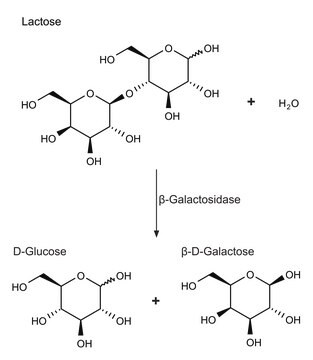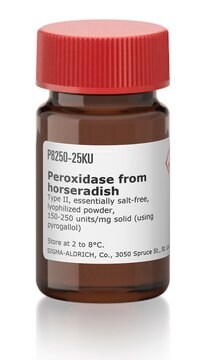90101
Ampliflu™ Red
for fluorescence, ≥98.0% (HPLC)
Sinónimos:
10-Acetyl-3,7-dihydroxyphenoxazine
About This Item
Productos recomendados
grado
for fluorescence
Ensayo
≥98.0% (HPLC)
Formulario
powder
fluorescencia
λex 571 nm; λem 585 nm in DMSO
idoneidad
suitable for fluorescence
temp. de almacenamiento
2-8°C
cadena SMILES
CC(=O)N1c2ccc(O)cc2Oc3cc(O)ccc13
InChI
1S/C14H11NO4/c1-8(16)15-11-4-2-9(17)6-13(11)19-14-7-10(18)3-5-12(14)15/h2-7,17-18H,1H3
Clave InChI
PKYCWFICOKSIHZ-UHFFFAOYSA-N
¿Está buscando productos similares? Visita Guía de comparación de productos
Categorías relacionadas
Aplicación
- Quantification of inflammatory mediators
- Determination of free and esterified cholesterol contents
- Evaluation of compounds as substrates for GABA-AT compounds
Información legal
Producto relacionado
Palabra de señalización
Warning
Frases de peligro
Consejos de prudencia
Clasificaciones de peligro
Acute Tox. 4 Oral
Código de clase de almacenamiento
11 - Combustible Solids
Clase de riesgo para el agua (WGK)
WGK 3
Punto de inflamabilidad (°F)
Not applicable
Punto de inflamabilidad (°C)
Not applicable
Equipo de protección personal
dust mask type N95 (US), Eyeshields, Gloves
Elija entre una de las versiones más recientes:
¿Ya tiene este producto?
Encuentre la documentación para los productos que ha comprado recientemente en la Biblioteca de documentos.
Los clientes también vieron
Nuestro equipo de científicos tiene experiencia en todas las áreas de investigación: Ciencias de la vida, Ciencia de los materiales, Síntesis química, Cromatografía, Analítica y muchas otras.
Póngase en contacto con el Servicio técnico













